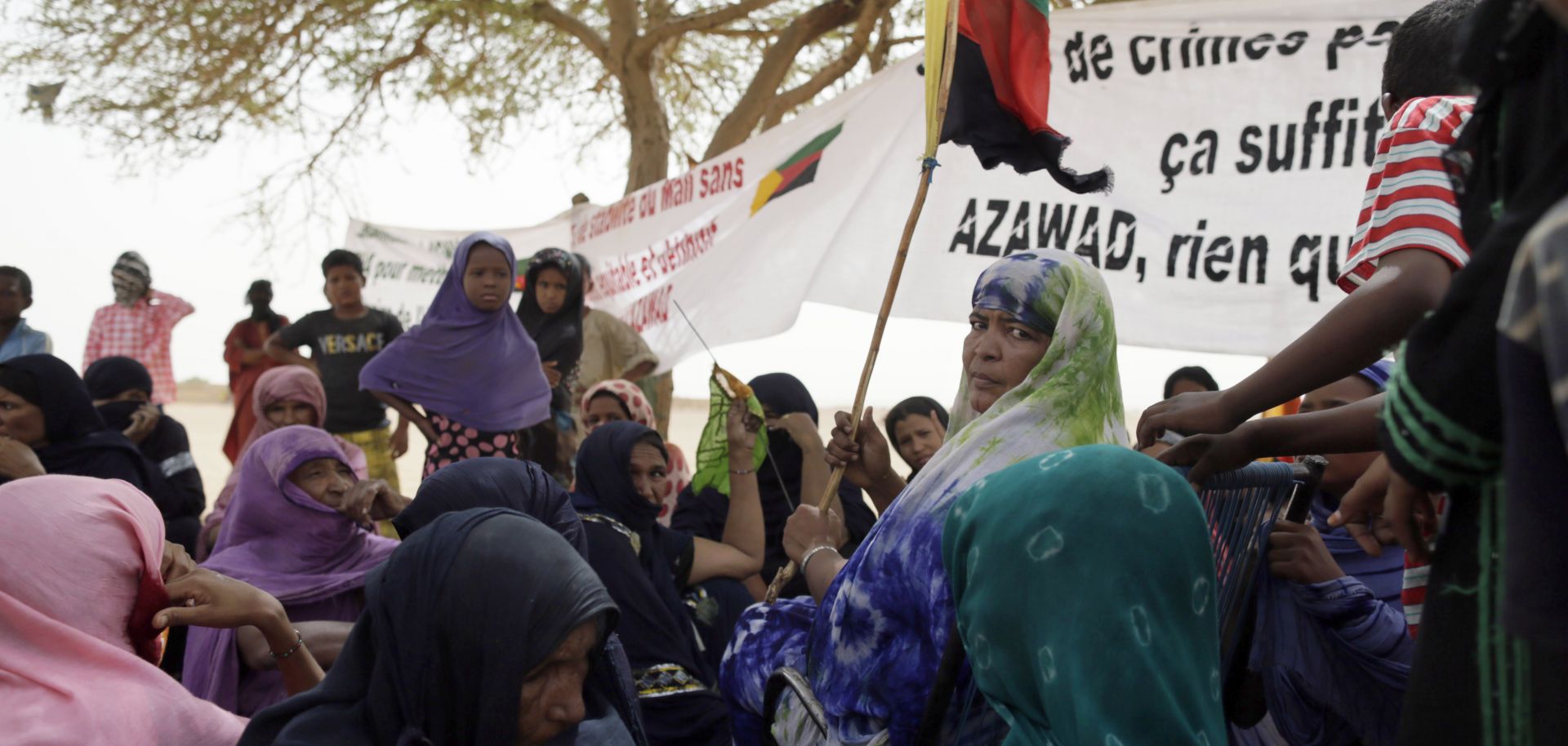
The National Movement for the Liberation of Azawad (MNLA) is a Tuareg militant group that formed in October 2011 and is presently one of the two largest militias in Mali, along with the Islamist militia Ansar Eddine. The MNLA is the most recent manifestation of periodic rebellions by Mali's ethnic Tuareg minority and ideologically is a secular, pro-democracy secessionist movement. MNLA Secretary General Bilal Ag Acherif leads the group's political wing. Former Libyan army Col. Ag Mohamed Najem, who fought in the 2007-2009 Tuareg rebellion before working in former Libyan leader Moammar Gadhafi's army, leads the military wing. An influx of armed Tuareg militants entering Mali from Libya after the fall of Gadhafi's regime considerably strengthened the movement. In mid-January, the MNLA began launching assaults on towns in northern Mali (an area the Tuaregs call Azawad), and by early April had seized control of the region's two largest towns, Gao and Timbuktu. Territorially, the MNLA is based in northeastern Mali around the Adrar de Ifoghas Mountains because of group members' familiarity with bases there and the heavy Ansar Eddine presence farther west and south around Timbuktu. Neither the Economic Community of West African States (ECOWAS) nor any international body recognizes the group's claims of sovereignty over northern Mali, and the MNLA lacks the arms and resources of Ansar Eddine. The group has also begun to show signs of internal fracturing, with indications of miscommunication and disagreement between its military and political wings. These divisions and the MNLA's other constraints have allowed other rebel groups operating on the margins to emerge.



